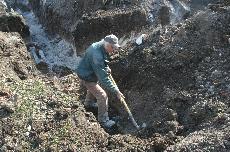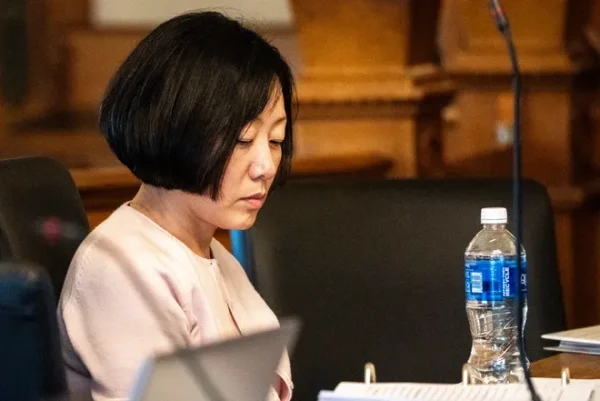Steam line repairs should be completed mid-December

December 3, 2008
Many buildings on campus have sporadically been left without heat in the past month.
According to Gary Dooley, assistant director of campus services, the non-heating season may be to blame.
“The college only generates steam during the heating season of October through the first part of May,” Dooley said. “During the start up period for heating, leaks in the system that may have occurred over the space of time appear as hot spots in the grass or steam condensate surfacing to the top of ground level.”
Because the pipes are buried, some leaks are not as easy to notice.
“The system is a direct buried system that is insulated from its surroundings by an underground insulation called Dri-Therm,” Dooley said. “The Dri-Therm is made from ground limestone. Since the system is buried out of view, we never know when or where the leaks might occur. We usually fix between four or five areas each year.”
Campus Services said there are a number of reasons for the leaks. Metal fatigue from the metal pipes expanding and contracting and the cracking of the fiberglass sections of the condensate return system are a couple of reasons. Heavy rains can also lead to the pipes corroding.
Dooley said there could be even more reasons.
“Electrolyses, which is a reaction to electromagnet fields associated with the direct buried electrical primary services, can cause rapid corrosion in steel, and lastly, friction,” Dooley said.
Some students see the repairs as a hassle when trying to get around campus.
“There shouldn’t be such a problem with the heat since it seems like they fix it at least every week,” freshman Keisha King said. “You’d think it would be working properly if you fix it a billion times.”
The repairs have caused frustration among some students, especially one repair between Pfeiffer and Dunn Library.
“It was very frustrating having to walk all the way around Barker to get places,” freshman Kayla Dale said. “It was freezing, and there was mud everywhere.”
With the heat turned off at times, students are dealing with the heating situations differently.
According to King, it was noticeable if the heat was on or off in the buildings.
“One day I’d walk in my room and it would be freezing, the next it would be extremely hot,” King said. “I used a lot of blankets and wore layers upon layers of clothing.”
Dooley hopes that the system will be completely repaired by the end of the second week of December.
“We try to get the systems up and running as fast as we can while maintaining safety,” Dooley said. “We have to work as safely as possible under what can be dangerous conditions.”
The working conditions involve many processes that can be hazardous.
“Iowa One Call is contacted with the address of the leak and the GPS readings so all underground utilities can be located,” said Dooley. “Next, we start digging, taking care not to damage any fiber optic, phone or gas lines that are usually always near the steam lines.”
The process continues with more people being called to help.
“When the leaks are found, another company comes in to weld new piping or repair any fiberglass defects that are found,” Dooley said. “After pressure testing is complete, the pipes are re-insulated with the ground limestone product, Dri-Therm, and the dirt is returned for back fill.”
Notifications are sent out as soon as campus services begin repairing the problems. School officials suggest students check their e-mail to stay updated on the steam line repair and which buildings will be without heat.












